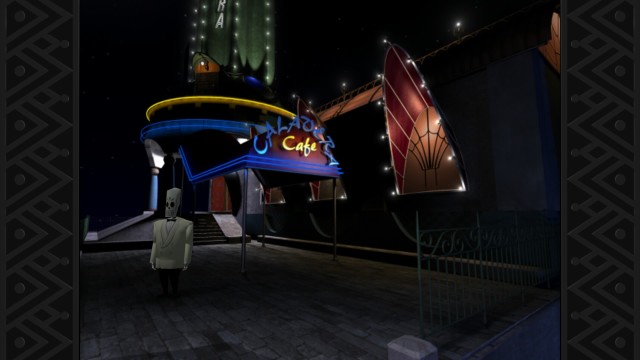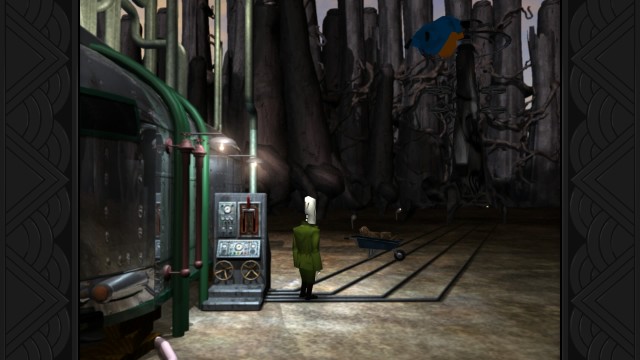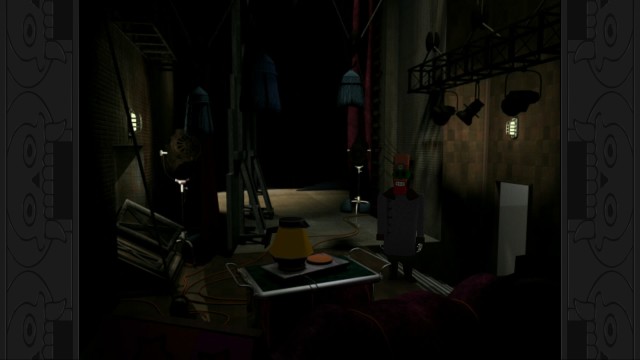
With the current renaissance of the adventure game underway thanks to companies like Telltale, it can be easy to forget the genre had dried up in the late 1990s and early 2000s. Before then, LucasArts, at the top of its game, released a slew of excellent adventure titles, many of which are considered classics. The last in its long line of well-received adventure games was Grim Fandango, a neo-noir comedy taking place in the Land of the Dead.
Widely considered one of the best adventure games around upon its initial release, Grim Fandango has now been faithfully remastered, containing everything that made the original special and then some.
Grim’s story follows down-on-his-luck travel agent Manny Calavera who, after a series of bad clients, discovers a conspiracy and then goes on a four-year-long journey to save a lost soul who was caught in the middle of it all. It’s a brilliantly written story with plenty of twists and turns, and it perfectly emulates the film noir style while also representing a respectful take on the culture surrounding Day of the Dead.
The tone, while at times serious, is definitely a more comical take on typical noir without downright mocking fans of the genre. It plays on tropes with grace and its dialogue, both due to timing and plenty of clever visual gags, is always on point. A few groan-worthy lines aside, Grim Fandango’s writing is its true selling point and represents the peak of the golden era of adventure games.

It wouldn’t be a real “remaster” if some things hadn’t been, well, remastered. Visually, the game holds up remarkably well on its own, but the updated lighting and character models make it look more cohesive. Originally, the blocky characters didn’t blend in particularly well with the backgrounds, but the slight (albeit effective) improvements are enough to change that for the better. It wasn’t until I swapped to the original visuals on the fly that I realized just how much nicer the updated visuals are. The soundtrack, which stood out as one of the best of the era, has been faithfully re-recorded and it sounds better than ever. In short, the care and attention to detail that went into bringing Grim Fandango back from the dead is astounding.
Control-wise, playing it using the PS4 controller feels natural. You can play with the original tank-style controls (which is how the game was designed to be played), but I doubt that option will appeal to new players at all. The updated controls are excellent and really make the simple act of interacting with various objects in the environment much simpler. If you’re on PC, you have the option to play with more traditional point-and-click controls, which eliminates the game’s occasional pixel hunts entirely. No matter what version you play, you’re bound to find the updates have solved many of Grim’s annoying problems.
Everything else you remember about Grim has remained unchanged though, for better or worse. Since it is still an adventure game, there are a good number of puzzles to be solved, many of which require more thinking outside of the box than you might expect from modern adventure games. I won’t deny many of these puzzles are obtuse, especially today, and a hint system similar to The Secret of Monkey Island’s remake a few years back would have really helped out new players. Who knew you had to give a demon a large quantity of wine in order to make it vomit, which in turn allows you to freeze said vomit was necessary to defuse a bomb? Yeah, it’s a real “chicken and pulley” situation.

Despite the game’s sometimes irritating puzzle solutions, Grim Fandango still stands out among the rest of the genre, past and present. It’s a gorgeous adventure title with some of the cleverest writing you’ll find in any game and returning to it 14 years later is a real joy. Even if you’re completely new to this classic, you’ll find a lot to love here. Best of all, this remastered version is the best way for it to find a new audience, which is always a plus in my book.
Pros: Brilliant writings, excellent updates to the visuals and music, improved controls
Cons: Some obtuse puzzles and the lack of a hint system might hinder new players



















